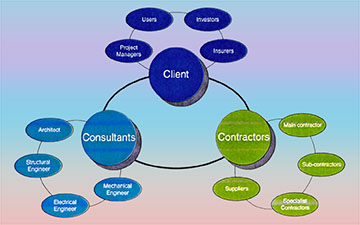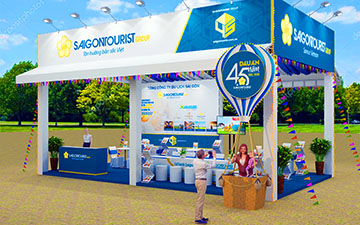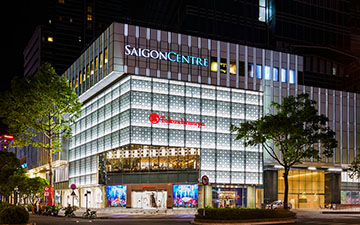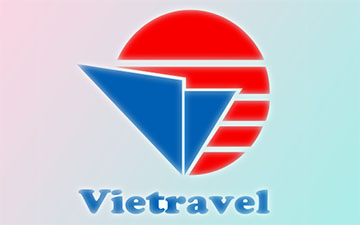RoHS DIRECTIVE COMPLIANT | THE KEY ISSUES
The RoHS Directive aims to prevent the risks posed to human health and the environment related to the management of electronic and electrical waste. RoHS means “Restriction of Certain Hazardous Substances” in the “Hazardous Substances Directive”. It restricted the use of lead, mercury, cadmium, hexavalent chromium, polybrominated biphenyls (PBB) or polybrominated diphenyl ethers (PBDE) in electrical and electronic equipment (EEE). If a product is RoHS-certified, this confirms that the proportion of hazardous, or difficult to dispose substances is limited to the maximum allowed.
The difference between RoHS 2 and RoHS 3. The original RoHS Directive 2002/95/ EC was replaced with a new version, RoHS Directive 2011/65/EC,3 also known as RoHS 2 or RoHS Recast. RoHS 2 includes a CE-marking directive, with RoHS compliance now being required for CE marking of products. As such, all manufacturers of electrical/electronic products must comply with RoHS 2 before the CE mark can be applied on their products. Directive 2015/863 is known as RoHS 3. RoHS 3 adds four additional restricted substances (phthalates) to the list of six.
This Directive 2015/863 has been adopted by the EU legislature and came into full force on the 22nd of July 2019 with a special provision for medical devices until 2021. On July 22, 2019, RoHS 3 was put into effect and now all electrical and electronic equipment on the EU market must act in accordance with the new restrictions. Imposition of the RoHS 3 regulations on medical devices and monitoring & controls instruments from categories 8 and 9 will go into effect on July 22, 2021. Category 8 in-vitro diagnostic medical devices (IVDs) exemption deadline is July 21, 2021. Category 9 industrial monitoring & control instruments; Category 11 products examption deadline is July 21, 2024.
RoHS and REACH: REACH is a general regulation. It addresses the production and use of chemical substances and their potential impact on human health and the environment. REACH is a horizontal legislation controlling the risks associated with chemical substances throughout their whole life cycle, while RoHS is a product-specific vertical legislation focuses on hazardous substances in electrical and electronic equipment (EEE). REACH is monitored by the ECHA and deals with 197 Substances of Very High Concern (SVHC) currently. While RoHS restricts substances present in electrical/electronic equipment (wiring, components, circuit boards, displays, sub-assemblies, cabling), REACH controls all chemicals that might be used to manufacture the product, including enclosures, brackets, coatings, paints, solvents, and chemicals used during manufacture.
RoHS and WEEE: WEEE is the acronym for Waste from Electrical and Electronic Equipment. WEEE, also known as Directive 2002/96/EC, mandates the treatment, recovery and recycling of electric and electronic equipment. All applicable products in the EU market after August 13, 2006, must pass WEEE compliance and carry the "Wheelie Bin" sticker. WEEE compliance aims to encourage the design of electronic products with environmentally safe recycling and recovery in mind. RoHS compliance dovetails into WEEE by reducing the amount of hazardous chemicals used in electronics manufacture.
SPONSORED CONTENT

Your Service Flyer

Your Event Invitation

Your Promotion Ads

Your Logo & Brand
Support us and grow your business with us. My goal was to make technical information available with ready access to commonly needed resources, formulas, and reference materials while performing my work as a Technical Support Engineer. The businesses listed in Sponsored Content were carefully selected because of their uniqueness. However, non-sponsored selected ads will be rotated monthly.
ViBa Direct lacks an advisory board to do research and hire writers with the latest technical knowledge. Creating an effective advisory board requires more than an invitation. Without your sponsorship, this is not possible. If your company is interested in placing the company’s logo, brand, event invitation, and other promotional banners and flyers here or on any other pages, please reach out to Customer Service for more detail.
RoHS and the ELV Directive The EU End of Life Vehicle (ELV) Directive relates to automobiles, while the RoHS directive covers a broad array of electrical and electronic products across many industries. The ELV directive applies to electrical cables, wiring, and associated components used in transportation vehicles. It went into effect July 1, 2003, and limits the use of lead, mercury, cadmium and hexavalent chromium (also restricted under RoHS). XLP (cross-linked polyethylene) insulated automotive-use wire such as SAE (Society of Automotive Engineers) types of SXL, GXL and TXL comply with this directive. Not comply is PVC-insulated automotive wire types may contain lead such as GPT, TWP, SGT and SGX.
RoHS and Conflict Minerals. In the form of a Full Materials Declarations (FMD). Often a compliance declaration will list RoHS, Reach, and Conflict Minerals (T3&G) together. demand. Under the Dodd-Frank Act, all publicly traded companies must report to the SEC the origin of conflict minerals.
RoHS Directive and its requirements. The RoHS Directive applies to all companies selling EEE finished products including components within finished products in Europe, regardless of where they were manufactured. Beyond this, any business selling applicable electronic products, sub-assemblies or components directly to EU countries, or to resellers, distributors or integrators that in turn sell those goods to EU countries will be impacted if they use any of the restricted materials.
RoHS EXEMPTIONS | IMPACTED PRODUCT CATEGORIES
What is RoHS exemption? As part of its RoHS implementation, the European Commission created 36 exemptions that defined specific permitted uses for these substances to give industry time to phase them out. Each exemption was assigned an expiry date after which these specific use cases for restricted substances would no longer be permitted. All exemptions have an expiration date. During the time a exemption is valid, industry experts are required to research and test replacements for the exempted substance(s) in the application. The listed product here are currently exempted from RoHS compliance.
Exemptions and their respective expiration dates. A capacitor containing lead attached to a circuit board contained within a device on a product assembly would be out of scope (ngoài phạm vi/tầm) because the device itself is out of scope (large scale healthcare commercical machines). However, that same capacitor attached to a circuit board contained in a desktop computer would be required to use the exemption 7(c)-I “Electrical and electronic components containing lead in a glass or ceramic other than dielectric ceramic in capacitors, e.g. piezoelectric devices, or in a glass or ceramic matrix compound” to be compliant with exemption, or reduce the lead content to a level below 0.1 percent to be compliant without the exemption. Understanding how a product is being used is key to determining whether or not it is out of scope or requires the use of an exemption to be compliant. For suppliers, exemptions should be included in their declarations as they have no way of knowing exactly how their supplied product will be used by the customer.
The difference between exempted and out of scope substances and product categories. Permanent exclusions from RoHS includes military equipment, space equipment, equipment designed to be part of another piece of equipment falling outside the scope of RoHS, large scale industry tools, large scale fixed installations, means of transport for persons or goods, non-road mobile machinery. RoHS categories are:
- Category 1: Large household appliances (LHA) such as refrigerators, washers, stoves and air conditioners.
- Category 2: Small household appliances (SHA) such as vacuum cleaners, hair dryers, coffee makers and irons.
- Category 3: IT and telecommunications equipment includes computing and communications equipment such as computers, printers, copiers and phones.
- Category 4: Consumer equipment includes electronics such as TVs, DVD players, stereos and video cameras.
- Category 5: Lighting equipment includes lighting such as lamps, lighting fixtures and light bulbs.
- Category 6: Electrical and electronic tools includes power tools such as drills, saws, nail guns, sprayers, lathes, trimmers and blowers.
- Category 7: Toys, leisure and sports equipment such as video games, electric trains and treadmills.
- Category 8: Medical devices and equipment includes in-vitro diagnostic medical devices (IVDs).
- Category 9: Control and monitoring equipment, such as thermostats, smoke detectors and fire alarms.
- Category 10: Automatic dispensers such as vending machines and ATM machines.
- Category 11: All other electrical and electronic equipment, including two wheeled electric vehicles, select electrical cables and vaporizers.
Exemption 6(c) If the part is declared RoHS compliant, it meets both the following criteria: Homogeneous materials have a maximum concentration by weight according to the list below or qualify for an exemption. If an exemption is required, it will be 6c: Copper alloy containing up to 4% lead by weight. Lead – 0.1% Mercury – 0.1%. It was extended until July-2021.
7(a)-I Lead in high melting temperature type solders (i.e., lead-based alloys containing 85 % by weight or more lead). For Category 8 and 9, expiration date is 21 July 2021. Sub Cat. 8 in- vitro is 21 July 2023. Sub Cat. 9 industrial is 21 July 2024.7(a)-II in all applications not addressed in items III and IV but excluding applications in the scope of exemption 24. For Category 1 to 7 and 10, expiration date is 21 July 2021.
7(a)-III for electrical connections on or near the voice coil in power transducers. For Category 1 to 7 and 10 expiration date was 21 July 2019.
7(a)-IV for die attach. For Category 1 to 7 and 10 expiration date was 21 July 2019.
7(b) is the use of lead within the products. Exemption 7b only applies when lead is used in a server or telecommunications product. This means a resistor with lead could be considered exempt when used in a server, but it cannot be used in a product such as a laptop.
Some suppliers would include Exemption 7b in their RoHS declaration and their products would appear in the system as “compliant with exemption.” However, the product was not compliant for any use other than server or telecommunications. Other suppliers did not claim the exemption at all, which confused some manufacturers. Today, however, the exemptions for categories 1 to 7 and 10 have expired. Exemptions for Categories 8 and 9 remain active until July 2021, though in vitro devices in Category 8 have an extended exemption until July 2023, and Category 11 and industrial monitoring and control instruments in Category 9 have extended exemptions until July 2024.
7(c) "Electrical and electronic components containing lead in a glass or ceramic other than dielectric ceramic in capacitors, e.g., piezo electronic devices, or in a glass or ceramic matrix compound" Applicant's documents.
15&15(a) applies to Flip chip packages assembly. Flip chip (also known as direct chip attach) is the process whereby a semiconductor die is attached bond pad side down to a substrate or carrier. The electrical connection is made by means of a conductive bump on the die bond pad. The bumps that connect the chip to the traces on the circuit/wiring board were originally made from an alloy of tin and lead (Sn63Pb37). Each alloy has its own melting point and, therefore, requires a specific temperature profile — including duration at specific temperatures — in the component assembly reflow process.
The RoHS Directive states that “lead in solders [can be used] to complete a viable electrical connection between semiconductor die and carrier within integrated circuit flip chip packages.” This means that in order to be RoHS compliant for products using the leaded solder, manufacturers of Category 8, 9 and 11 products can still use Exemption 15 in their RoHS declaration.
However, all other categories of manufacturer must use Exemption 15(a). This exemption can be applied to the following products:
- A semiconductor technology node of 90 nanometers or larger.
- A single die of 300 square millimeters or larger in any semiconductor technology node.
- Stacked die packages with die of 300 square millimeters or larger, or silicon interposers of 300 square millimeters or larger.
29 allows the use of lead in crystal glass, such as the kind used in crystal chandeliers and lamps. Lead provides improved luminosity for the glass and increases the amount of time available to work with the heated glass. The extra time allows for more elaborate and elegant chandeliers or lamps. That extra time is lost when replacement substances are used in place of lead. It is scheduled to expire in July 2021, with extensions until July 2023 for in vitro devices in Category 8 and until July 2024 for Category 11 and industrial monitoring and control equipment in Category 9.
Product Out of Scope of RoHS: An exemption is different from a product being out of scope. Out-of-scope products are of a specific type or category that are allowed to be shipped into the EU without any limits on the amount of the restricted substances they contain. Products may also be out of scope based on their application. Electrical products that are going into space, for example, will be out of scope for the foreseeable future.
The specific products or applications that are out of scope of RoHS 2 are named in Article 2(4) and are not expected to be implemented within a specific timeframe. They are as follows:
- Equipment necessary for the protection of the essential interests of the security of member states, including arms, munitions and war material intended for specifically military purposes.
- Electrical products that are going into space.
- Large-scale stationary industrial tools, and large-scale fixed installations.
- Electric two-wheel vehicles that are not type-approved.
- Non-road mobile machinery made available exclusively for professional use.
- Active implantable medical devices.
- Photovoltaic panel to produce energy from solar light for public, commercial, industrial and residential applications.
- Research and Development equipment.
A lead-containing resistor attached to a circuit board contained within a robot on an automobile assembly line would be out of scope because the robot itself is out of scope (stationary industrial tools).
How long is a RoHS certificate valid for? A RoHS certification is valid for five years. However, early re-certification may be required if a product undergoes significant changes in design, raw materials or sourcing procedures.
RoHS DIRECTIVE (2002/95/EC)
The RoHS Directive, also known as Directive 2002/95/EC, entered into effect on July 1, 2006. The directive restricted the use of six chemicals harmful to human and environmental health in electrical and electronic equipment (EEE) and was the original foundation of RoHS 2 and its amendments. RoHS is closely linked to the Waste Electrical and Electronic Equipment Directive (WEEE) (2002/96/EC) which outlines collection, recycling and recovery targets or electrical goods in an effort to help solve the problem of toxic electronic waste. These six chemicals and their accepted thresholds under RoHS 1 were:
- Lead (Pb), chì (≤ 0.1%). Lead is a chemical element with the symbol Pb (from the Latin plumbum) and atomic number 82. It is a heavy metal that is denser than most common materials. Lead is widely used for car batteries, pigments, ammunition, cable sheathing, weight barbells, weight belts, sinkers, lead crystal glass, radiation protection and in some solders. It is often used to store corrosive liquids.
- Mercury (Hg), thuỷ ngân, (≤ 0.1%). Mercury is a chemical element with the symbol Hg and atomic number 80. It is commonly known as quicksilver and was formerly named hydrargyrum. Mercury is used in appliances, automotive parts, thermometers, barometers, batteries, dental amalgam, float valves, electronic switches and relays, fluorescent lamps, jewelry, other devices, and vacines. Mercury is a persistent, bioaccumulative, toxic pollutant. When released into the environment, it accumulates in water laid sediments where it converts into toxic methylmercury and enters the food chain.
- Cadmium (Cd), catmi, (≤ 0.01%). Cadmium is a chemical element with the symbol Cd and atomic number 48. This soft, silvery-white metal is chemically similar to the two other stable metals in group 12, zinc and mercury. Cadmium is used in many products, including batteries, pigments, metal coatings, solar cells, plastic stabilizers, pigments, and it is found in cigarette smoke. Cadmium is an important metal in the production of nickel-cadmium (Ni-Cd) rechargeable batteries and as a sacrificial corrosion-protection coating for iron and steel. Cadmium enters the environment through mining operations and the action of wind and rain.
- Hexavalent chromium (chromium VI, Cr+6), cơ rôm với 6 hóa chất kết hợp, (≤ 0.1%). Hexavalent chromium (chromium(VI), Cr(VI), chromium 6) is chromium in any chemical compound that contains the element in the +6 oxidation state (thus hexavalent). Hexavalent chromium is a form of the metallic element chromium. Chromium is a naturally occurring element found in rocks, animals, plants, soil, and volcanic dust and gases. It comes in several different forms, including trivalent chromium and hexavalent chromium. Trivalent chromium is often referred to as chromium (III) and is proposed to be an essential nutrient for the body. Hexavalent chromium, or chromium (VI), is generally produced by industrial processes. Chromium compounds, such as hexavalent chromium, are widely used in electroplating, stainless steel production, leather tanning, textile manufacturing, and wood preservation.
- Polybrominated biphenyls (PBB), hóa chất đa hợp brôm không màu, (≤ 0.1%). Polybrominated biphenyls (PBBs), also called brominated biphenyls or polybromobiphenyls, are a group of manufactured chemicals that consist of polyhalogenated derivatives of a biphenyl core. PBBs usually exist as colorless to off-white solids. PBBs soften at 72 degrees Celsius and decompose above 300 degrees Celsius. They have low vapor pressure, are very soluble in benzene and toluene, and insoluble in water. They are degraded by UV light. PBBs are used as flame retardants of the brominated flame retardant group. They are added to plastics used in products such as home electrical appliances, wire insulations, textiles, plastic foams, laptop cabinets, draperies, upholstery, etc. to make them difficult to burn.
- Polybrominated diphenyl ethers (PBDE), hóa chất đa hợp brôm không màu, (≤ 0.1%). Polybrominated diphenyl ethers (PBDEs) and polybrominated biphenyls (PBBs) belong to a class of flame retardant chemicals widely used in consumer products such as electrical equipment, construction materials, coatings, textiles and polyurethane foam, mattresses, and furniture padding. Similar in structure to polychlorinated biphenyls (PCBs), PBDEs resist degradation in the environment.
RoHS Directive (2002/95/EC) Exemptions: The original RoHS Directive (2002/95/EC) included 36 exemptions applying within specific use cases for each restricted substance (this number is now closer to 150). These exemptions were given an expiry date, after which time that particular use would no longer be permitted. An exemption temporarily allows a restricted sub-stance to be used in certain applications in cases where a suitable alternative is not available. During the time period in which the exemption applies, industry experts research and test possible replacements for the exempted substances in various applications. If alternatives cannot be found during this period, manufacturers can request an extension or clarification of the exemption to allow further time for suitable replacements to be found. If a request for ex-tension is rejected, the exemption will expire between 12 and 18 months after the decision by the European Parliament is made. At this time, products containing the substance will become non-compliant with the RoHS Directive. However, certain applications may be exempt from RoHS restriction if it is technically or scientifically impracticable to prohibit the use of certain hazardous substances at present.
RoHS 2 DIRECTIVE (2011/65/EU)
RoHS Directive (2011/65/EU), known as RoHS 2 Directive, is a recast of the first EU RoHS Directive 2002/95/EC. The new Directive came into force on the 21st of July, 2011 and was aligned with the New Legislative Framework. It lays down the rules on the restriction of the use of hazardous substances in electrical and electronic equipment (EEE). Such hazardous materials are mercury (Hg), lead (Pb), cadmium (Cd), polybrominated biphenyls (PBB), dibutyl phthalate (DBP), diisobutyl phthalate (DIBP), hexavalent chromium (Cr(VI)), polybrominated diphenyl ethers (PBDE), bis (2-ethylhexyl) phthalate (DEHP) and butyl benzyl phthalate (BBP). They can be challenging to manage at the end of the product’s life cycle, and because of that the Directive restricts their use at the initial stage, i.e. during product’s manufacturing, and helps to keep them out of the waste stream.
The RoHS 2 Directive further provides regulations for protecting human health and the environment, along with the environmentally sound recovery and the disposal of waste EEE. RoHS 2011/65/EU has many goals, but one of the most important is to reduce administrative burdens and make sure there is coherency with the newer policies and legislation. For instance, those related to the new legislative framework for the marketing of products within the EU borders.
Scope of RoHS. In comparison to RoHS 2002/95/EC, RoHS 2 imposes new obligations on EEE manufacturers regarding the preparation of EU Declaration of Conformity and placing the CE markings on finished products. The latter was included in the Directive’s scope because the original RoHS Directive didn’t have any formal marking requirements for illustrating CE compliance, which brought many manufacturers to design their own RoHS symbol and issue their version of a “Declaration of Conformity”. RoHS 2011/65/EU are included electrical and electronic equipment from the following product categories:
- Automatic Dispensers | Consumer Equipment | Large and Small Household Appliances | Toys | Leisure and Sports Equipment.
- Medical devices, including In-Vitro diagnostic medical devices | Monitoring and control instruments, including those with industrial purpose.
- IT and Communications Equipment | Electrical and Electronic Tools | Lighting Equipment.
Any other electrical and electronic equipment which is not covered by any of these categories – the deadline for adopting the change is the 22nd of July, 2019.
‹•› Within the Directive’s scope not included are:
- Electrical and Electronic Equipment with Specifically Military purposes & Space Equipment.
- Electrical and Electronic Equipment specially designed to be a part of another kind of equipment outside of the scope of this Directive, and which can fulfil its function only if it is part of that equipment and can be replaced only by the same specially designed equipment.
- Large-scale stationary industrial tools | Large-scale fixed installations | Equipment which is designed explicitly for research and development.
- Transport vehicles for people or goods, except electric two-wheel vehicles which are not type-approved | Active implantable medical devices.
- Photovoltaic panels assisting in the production of solar energy for a public, commercial, industrial and residential applications.
Conformity and Legal Obligations: To demonstrate CE compliance with RoHS 2011/65/EU, manufacturers of electronic and electrical equipment must conduct conformity assessment, prepare a Declaration of Conformity, and affix the CE mark on their products before placing them on the EU market. RoHS Directive places legal obligations not only on manufacturers but also on authorised representatives, importers and distributors, including retailers.
‹•› Manufacturers: Any manufacturer of electrical and electronic equipment who wants to place their product on the EU market have the following legal obligations:
- Ensuring that the product’s design and manufacturing comply with RoHS 2011/65/EU. | Ensure that any non-compliant electronic or electrical equipment is withdrawn from the market, and take corrective action to make it comply with the regulations. | Ensure your product’s compliance throughout its production life.
- Create technical documentation, also known as a “technical file”. | Create a Declaration of Conformity. | Complete conformity assessment according to the regulations. | Keep product’s technical documentation and the Declaration of Conformity for 10 years.
- Make sure that the equipment is marked with type, batch or serial number for identification. | Place your name, trade name or trademark on the product and packaging. | Affix the CE mark to the product.
- Have effective production control systems to support compliance and review them to ensure that the equipment remains compliant over time.
‹•› Authorised Representatives: All authorised representatives must be established within the EU borders and can be sub-contractors, agents, importers or distributors. An EU authorised representative is who has received a written mandate from a manufacturer based within or outside the European Union to carry out specific administrative tasks related to placing electrical and electronic equipment on the EU market. The legal obligations of the authorised representatives are, as follows:
RoHS 3 DIRECTIVE (2015/863/EU)
A further RoHS amendment (2015/863) followed in 2015, adding four more substances (all phthalates) to the list of restricted chemicals under Annex II. This brought the total number of restricted substances to 10.
- Bis(2-ethylhexyl) phthalate (DEHP), hợp chất làm mềm dẻo Bi-2e. Bis(2-ethylhexyl) phthalate is an organic compound with the formula C₆H₄(CO₂C₈H₁₇)₂. This colorless viscous liquid is soluble in oil, but not in water. DEHP is still used in various types of plastic consumer products, including shower curtains, furniture, automobile upholstery, garden hoses, floor tiles, rainwears, shoes, lunchboxes, backpacks, binders, plastic food packaging materials, and coverings on wires and cables. DEHP is the most common member of the class of phthalates, which are used as plasticizers in many products, especially in medical devices, such as intravenous (IV) bags and tubing, umbilical artery catheters, blood bags and infusion tubing, enteral nutrition feeding bags, nasogastric tubes, and peritoneal dialysis bags.
- Benzyl butyl phthalate (BBP), ben-bu-ty-tha (hợp chất lỏng hy-đrô-các-bon và me-ti-la không tan trong nước, thơm và không màu sắc). Benzyl butyl phthalate is a phthalate, an ester of phthalic acid, benzyl alcohol, and n-butanol. BBP is a clear liquid with the chemical formula C₁₉H₂₀O₄. (C19H20O4). It was mostly used as a plasticizer for PVC, polyvinyl and cellulosic resins and as an organic intermediate. BBP was commonly used in vinyl foams, vinyl flooring, sealants, pants, and floor tiles.
- Dibutyl phthalate (DBP), đi-bu-tha. Dibutyl phthalate is a colorless oil, although commerical samples are often yellow. Dibutyl phthalate is an organic compound with the chemical formula C₆H₄(CO₂C₄H₉)₂ (C16H22O4) used mainly personal care products like hair spray, insect repellent, and nail polish that prevents nail polishes from becoming brittle. It is also used in some household product include toothbrushes, automobile parts, tools, toys, food packaging, and cleaning products.
- Diisobutyl phthalate (DIBP). Diisobutyl phthalate is prepared by esterification process of isobutanol and phthalic anhydride. Its structural formula is C₆H₄(COOCH₂CH(CH₃)₂)₂ (C16H22O4). DIBP is an odorless plasticizer and has excellent heat and light stability and dissolve in water. DIBP has lower density and freezing point than the related compound dibutyl phthalate (DBP). Otherwise, it has similar properties DBP and can often be used as a substitute for it. DiBP is used in floorings, adhesives, lacquers, inks, hydraulic fluids and lubricants.
The maximum allowable concentrations for these was set at 0.1 percent, weight by weight (w/w). As of July 22, 2019, the four substances cannot be placed on the EU market in concentrations above this threshold, with the exception of monitor and control equipment and medical devices (including in vitro devices), which cannot be put on the market after July 22, 2021.
RoHS • CHINA | JAPAN | SINGAPORE | SOUTH KOREA | INDIA | TURKEY
China RoHS 2 is a "Management Methods for the Restriction of the Use of Hazardous Substances in Electrical and Electronic Products (EEP)". Substances: Standard six by 2019 | Exemptions: 12 additional product types | Included Products: Electrical and Electronic Products (EEP, 12 types of aditional products required to be compliant as of March 2019 | Compliance: Labeling and declaration using a custom table in Chinese, additional labeling requirements come into effect in November 2019 for an additional 12 product types.
Japan RoHS is the "Law for Promotion of Effective Utilization of Resources in Japan (Japanese Recycling Law) and mandatory industry standard JIS C 0950 aka: J-MOSS ("The marking for presence of the specific chemical substances for electrical and electronic equipment” (effective July 1, 2006). Substances: Standard six | Exemptions: Similar to EU | Included Products: Seven specific categories, including batteries | Compliance: Labeling and declaration using a custom form.
South Korea RoHS is the "Act for Resource Recycling of Electrical and Electronic Equipment and Vehicles" (effective January 1, 2008, phthalates effective January 1, 2020). Substances: Standard six substances and four phthalates, plus four for vehicles | Exemptions: Similar to EU | Included Products: Five specific categories plus vehicles, broken out into specific product types | Compliance: Self-declaration through an online program or website disclosure. No marking or labeling requirements.
NỘI DUNG TÀI TRỢ

Quảng Cáo Dịch Vụ

Quảng Cáo Sự Kiện

Quảng Cáo Khuyến Mãi

Thương Hiệu & Nhãn Hiệu
Hỗ trợ chúng tôi và phát triển doanh nghiệp của bạn với chúng tôi. Mục tiêu của tôi là cung cấp thông tin kỹ thuật với khả năng truy cập sẵn sàng vào các tài nguyên, công thức và tài liệu tham khảo thường cần thiết trong khi thực hiện công việc của mình với tư cách là Kỹ sư hỗ trợ kỹ thuật. Các doanh nghiệp được liệt kê trong Nội dung được Tài trợ đã được lựa chọn cẩn thận vì tính độc đáo của chúng. Tuy nhiên, các quảng cáo liệt kê không được tài trợ sẽ được luân chuyển thay đổi hàng tháng.
ViBa Direct thiếu một ban cố vấn để thực hiện nghiên cứu và thuê các nhà văn với kiến thức kỹ thuật hiện đại. Việc tạo ra một ban cố vấn hiệu quả đòi hỏi nhiều hơn là một lời mời. Nếu không có sự tài trợ của bạn, điều này khó có thể thực hiện. Nếu công ty của bạn có nhu cầu quảng cáo, đặt biểu trưng, thương hiệu, biểu ngữ mời tham gia thảnh viên, hội viên cũng như các bích chương quảng cáo ở đây hoặc trên bất kỳ trang nào khác, xin vui lòng liên hệ với nhóm Dịch Vụ Khách Hàng Dịch Vụ Khách Hàng để biết thêm chi tiết.
Singapore RoHS is the "Second Schedule of the Environmental Protection and Management Act, Chapter 94A". Substances: Standard six | Exemptions: Same as the EU | Included Products: Six specific categories. | Compliance: Declaration of conformance to be included in the import documentation or presented before sale on the market when manufactured in Singapore.
India RoHS is the "E-waste (Management and Handling) Rules 2011" (effective May 1, 2014). Substances: Standard six | Exemptions: Same as the EU | Included Products: Consumer EEE, IT and telecom. | Compliance: Include information on RoHS in instruction manuals. No marking or labeling requirements.
Turkey RoHS is the "Regulation on the Restriction of Hazardous Substances in EEE" (effective June, 2009). Substances: Standard six | Exemptions: Similar to the EU but not as detailed. | Included Products: EEE, specific voltages (under 1,000 volts AC or 1,500 volts DC). | Compliance: Declaration of conformance submitted annually.
THE RoHS REQUIREMENTS & ENFORCEMENT
Requirements: Companies of EEE (Electric and electronic equipment) in scope of the RoHS Directive are responsible for ensuring their products meet the requirements of the directive. Producres and manufacturers sells EEE products under their own brand on the market must be ready to demonstrate the compliance of these products with the RoHS Directive by ensuring they have the relevant technical documentation on hand to support this. Resells under their own brand equipment produced by other suppliers, a reseller not being regarded as the "producer" if the brand of the producer appears on the equipment, as provided for in subpoint (điểm phụ); or Imports or exports electrical and electronic equipment on a professional basis into a Member State. In order for the final product to remain compliant, these components and sub-assemblies must themselves not contain any of the 10 restricted substances in quantities above the threshold concentration values. A certificate from the suppliers that the parts supplied are RoHS compliant is required. Producers should also perform selected audits to confirm the compliance of these parts, as deemed necessary.
CE Marking: In addition, RoHS 2 (i.e. as of 2013) requires all EEE in scope to have a CE (Conformité Européene) marking, and to feature a reference to RoHS 2 on the product’s Declaration of Conformance. All CE marking directives require the manufacturer of the product to create a technical file containing the analysis and component data required to demonstrate that product’s compliance with the regulations relevant to it. This technical file must be kept for a minimum of 10 years after the product is put on the market (as per article 7d). Should a product’s compliance be questioned by enforcement authorities, this technical file must be produced within 28 days of the request. Manufacturers are not required to make this file available to the public or to customers.
Technical Files in Alignment with CE Marking Requirements: The support technical files to be maintained for ten years after the product has been placed on the market should include:
- A general description of the product and how it operates.
- Conceptual, design and manufacturing drawings, and schemes of components, sub-assemblies and circuits, with descriptions and explanations.
- A list of harmonised standards and/or other relevant technical specifications used. The results of design calculations and examinations, and relevant test report.
Declaration of Conformity (Tuyên bố về sự phù hợp) includes —›
- Information, such as the serial number, to identify your EEE and ensure that it is traceable.
- Your business name and address or that of your authorized representative.
- The unique identification number of your EEE. Place and date of issue.
- A statement that the DoC is issued under your sole responsibility. Name, function and signature.
- A statement that your EEE complies with the relevant RoHS requirements.
THE RoHS ENFORCEMENT ACTION
Enforcement Action: The RoHS Directive gives the National Measurement & Regulation Office (NRMO) a range of powers, including:
- A range of sanction powers, including fines of up to £5,000 per non-compliant product.
- The power to request technical documentation and other evidence.
- The power to inspect, seize and detain EEE.
- Powes of entry with the power to make test purchases, and the ability to give warrants.
The following explains how to assess the products for compliance with the RoHS Directive using appropriate documentation. The second part of this instruction shows the steps that could be taken by a RoHS enforcement body against a company demonstrating non-compliance with the directive. These have been adapted from the Environ-mental Protection Agency’s (EPA) RoHS Enforcement Guidance Document, and should not be viewed in isolation from it.
Product Within the Scope of RoHS: Carry out targeted XRF analysis of higher risk products to detect infringements (relevant only for some EU States and optional) —› Request technical documentation showing that the producer’s RoHS compliance assurance system is effective (within time limit specified by the enforcement authority) —› If —›
‹•› Process-based document exit: (Tài liệu dựa trên quy trình nếu có) Producer to provide process-based technical documentation —› if —›
- there is sufficient evidence of active supply chain RoHS management process in place and being followed —› No further action.
- there is not sufficient evidence of active supply chain RoHS management process in place and being followed —› Producer to provide additional documentation as specified by Enforcement Authority —› if —›
- there is sufficient evidence that all homogeneous materials are RoHS compliant —› No further action.
- there is not sufficient evidence that all homogeneous materials (vật liệu đồng nhất) are RoHS compliant —› Initiate product/part sampling for RoHS compliance. Undertake product/part testing —› if All homogeneous materials RoHS compliant
- All homogeneous materials are RoHS compliant —› No further action.
- All homogeneous materials are not RoHS compliant —› Inform producer —› if —›
- enforcement action is to be taken —› appropriate enforcement action is undertake.
- enforcement action is not to be taken —› producer consultation and agree on remedial actions to bring product into conformance —› producer carries out remedial actions and submits evidence (within time limit specified by the enforcement authority) —› assess evidence of actions by producer —› if —›
- there is completed sufficient evidence of remedial actions —› No further action.
- there is not completed sufficient evidence of remedial actions —› enforcement action to be taken —›
DEVELOPING AN EFFECTIVE COMPLIANCE PROGRAM
Engage with your subject matter experts (SMEs) (chuyên gia vấn đề)) to identify potential in-scope products. Just because a particular product or part is not in scope of RoHS directly, does not mean we should ignore it when evaluating for RoHS-specific substances. The regulatory landscape is expanding, meaning other regulations, such as REACH, may capture that product in-scope and restrict the same substance in the future. By evaluating the product or part now, and proactively making changes to insulate your company from regulatory changes in the future —›
- Assign tasks to project leads and ensure tasks are communicated down the line as soon as possible.
- Personnel in your research and development (R&D) department or sustained engineering groups are most likely to know if and where the substances are in your products, and can then help to narrow the scope of the project accordingly.
- Remove any part or product from your list that are not at-risk of having the restricted substance in their composition. By asking your SMEs to remove any product or part from the process that have no risk of containing the restricted substance can significantly reduce the scope of the project.
- Scrub your product data to ensure part numbers have not been duplicated, and that all data is as clean as possible before inputting it into due diligence software.
Reach out to suppliers for data:
- Ask whether your suppliers have any of the substances in question in their parts. If yes, check whether they have any alternatives to this substance.
- If they have no alternative, you will need to consider sourcing a new supplier. Those with alternatives already in place demonstrate their understanding of the kinds of regulatory restrictions your company faces, along with their eagerness to proactively change and adapt their products so as to retain your business.
Commence design change process: Changing a product’s composition can come with design changes that impact everything from specifications to certifications and manufacturing process compatibility. This is where the new design is conceptualized, rigorously tested, implemented and certified, all before moving on to manufacturing. Overlooking any of these steps, and the many others that are more industry-specific, can result in the failure of your new design to meet the product’s intended use, or its failure to live up to the user’s expectations in terms of durability, safety and use-ability. Even if your product now has market access, the new design still has to work as intended.
- Ask your subject matter experts (SMEs) if the product specifications need to change. Regulators use this information to quickly scan what a product’s intended use is, how it is actually used, and whether it is intended to be RoHS compliant. This may not be a regulatory requirement, but is a best practice with both internal and external benefits.
- Any design change must align with the company’s overall regulatory strategy, ensuring the product complies with any required regulation to maintain market access in the various countries the product is sold.
- Design verification is the testing portion, where the new design is put through its paces to ensure it meets the updated product specifications. This step will vary by industry, but in medical device, for example, you might test for the new material’s ability to be sterilized, whether or not it interacts with packaging, shelf-life and others.
- Risk management analysis is an important step to verify the new design does not increase risk related to electronic safety, fires and/or malfunctions.
- Test the manufacturing process to make sure the new material is compatible with existing processes, or determine if anything needs to change in the manufacturing process to accommodate the new design. Different industries require products to meet certain certifications, therefore it is important to verify specific cer-tifications, such as bio-compatibility, before moving on to manufacturing.
- At this point the product has been well-tested, but it is still important to ensure the final design meets the user’s needs and its intended use.
- Update product registration and codes.
Manufacture the new product • Inventory and Stock Management: At the end of the process, you need to ensure all your outdated and non-compliant inventory has been moved out of your warehouses and replaced with the new product. To avoid stress and the risk of missing any inventory, aim to achieve this several months in advance of the deadline. Including factory line items used in the manufacturing process is vital to make sure nothing is missed that could otherwise affect the product’s compliance. This is a common gap in most programs and leads to inadvertent non-compliance.
- Ensure that non-compliant parts and products are removed from your com-pany’s inventory and are fully replaced with the new compliant alternatives by the deadline date. Of course, it is best practice to achieve this well in advance.
- Include all floor stock and existing manufacturing aids in the changeover process, which often get missed given these are not always listed on the bill of materials.
RoHS STEPS TO CERTIFICATION
Testing: On-site or XRF testing and/or lab phthalate solvent extraction testing is done to determine values of the ten restricted RoHS substances.
Process Audit: Inspect all applicable manufacturing processes used towards RoHS compliance on-site.
Document Review: Review the Bill of Materials, Technical File, assembly drawings, materials declarations, test reports, and conformance/compliance certificates from all suppliers.
The Technical File must contain the following:
- General product description and design structure information.
- Risk assessments of materials, parts and subassemblies.
- Conformity information on materials, parts, and subassemblies.
- Manufacturing documentation and records.
- Harmonized standards, specifications, and conformity procedures.
Certification Statement: After a successful audit, a RoHS Certificate of Compliance (also known as a Certificate of Conformity or Declaration of Conformity) is issued.
RoHS Directive is a complex process that, without significant internal resources, cannot be achieved successfully without support. Complying with the RoHS Directive and similar regulations is entirely dependent upon our understanding of the product and its composition. That means we need to leverage data (both from internal sources and the suppliers) to gain that understanding, evaluate the product for compliance issues, and know what steps we must take to comply.
Your Support Can Help Us Grow. Thank you for visiting ViBa Direct. As part of our commitment to continually improving the visitor experience. I am writing to ask you for your support, such as listing your company here with us. Clearly there is a great deal of manufacturers and distributors including both mechanical and electrical. Unfortunately, I don't have enough manpower to meet everyone needs. But if you are interested in finding out how to support us. Please provide details about your products and reach out to Customer Service, as well as any offerings that you feel may meet customer needs. Thank you in advance for taking the time to read this. Feel free to contact us with any additional feedback you would like to share about your experience visiting ViBaDirect.com.




